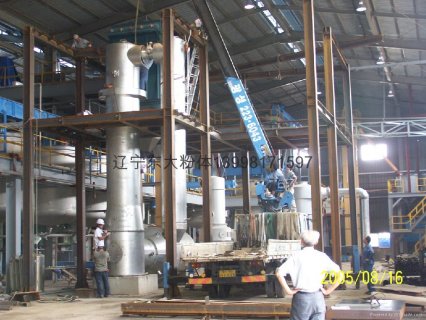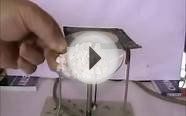
Calcium oxide decomposition
I. PRODUCT IDENTIFICATION
Manufacturer/Supplier:
ESPI Metals
1050 Benson Way, Ashland, OR97520
Toll Free (800) 638-2581 * Fax (541) 488-8313
E-Mail: This e-mail address is being protected from spambots. You need JavaScript enabled to view it
Product Name: Calcium Oxide
Formula: CaO
CAS Number: 1305-78-8
II. HAZARDOUS INGREDIENTS
Hazardous Component: Calcium Oxide
Percent (%): 0-100
OSHA/PEL: 5 mg/m3
ACGIH/TLV: 2 mg/m3
III. PHYSICAL DATA
Boiling Point: 2850 oC
Melting Point: 2580 oC
Specific Gravity: 3.32 - 3.35 g/cc
Solubility in H2O: Decomposes to form Ca(OH)2, exothermic reaction.
Appearance and Odor: White or grayish-white powder.
IV. FIRE AND EXPLOSION HAZARDS DATA
Flash Point: N/A
Autoignition Temperature: N/A
Flammable Limits: Upper: N/A Lower: N/A
Extinguishing Media: Not combustible but contact with water or moisture may generate sufficient heat to ignite combustible materials. If involved in a fire, do not use water. Use carbon dioxide, dry powder extinguishing agents, dry sand, or dry ground dolomite.
Special Fire Fighting Procedures: Firefighters must wear full face, self-contained breathing apparatus and full protective clothing to prevent contact with skin and eyes. Fumes from fire are hazardous. Isolate runoff to prevent environmental pollution.
Unusual Fire and Explosion Hazard: Not considered to be an explosion hazard. The combination of calcium oxide and water at high temperatures may be explosive.
V. HEALTH HAZARD INFORMATION
Effects of Exposure:
To the best of our knowledge the chemical, physical and toxicological properties of calcium oxide have not been thoroughly investigated and recorded.
Calcium compounds: The fumes evolved by burning calcium in air are composed of calcium oxide which is an irritant to the skin, eyes and mucous membrane. Generally speaking, calcium compounds should be considered toxic only when they contain toxic components or as calcium oxide or hydroxide. Calcium compounds are common air contaminants. (Sax, Dangerous Properties of Industrial Materials, eighth edition)
Acute Effects:
Inhalation: Severe upper respiratory tract irritation. Ulceration and perforation of the nasal septum may occur from extended exposure. May aggravate pre-existing lung diseases.
Ingestion: May attack the esophagus. Abdominal pain, nausea and vomiting may result. May cause serious alkali burns in the mouth and throat. As a corrosive...
You might also like







